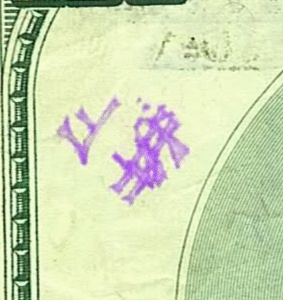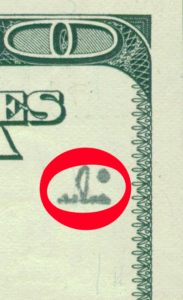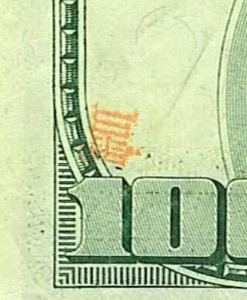Ever spotted a U.S. dollar bill with a strange symbol, a small stamp, or unfamiliar initials on it? These markings, known as chop marks, may look odd—but they tell a fascinating story of global travel, trust, and money exchange.
What Are Chop Marks?
Chop marks are small, often discreet stamps placed on U.S. bills by money changers or currency handlers—mostly outside the United States. Common in places like Southeast Asia, Latin America, and parts of Africa, these marks signal that a bill has been checked and confirmed to be genuine.



Why Are They Used?
In regions where counterfeit currency is a real problem and financial systems aren’t always trusted, chop marks serve a simple but important purpose:
-
✅ They confirm the bill has passed security checks
-
🔄 They track the bill’s movement through local markets
-
🛡 They build trust in areas without strong central banking systems
Think of a chop mark as a “seal of approval” from a previous handler, especially in areas where U.S. dollars are used widely but verification tools are limited.
Where Did This Practice Start?
The word “chop” comes from Chinese trading history. In the past, Chinese merchants stamped silver coins to prove their authenticity, weight, and trustworthiness. Over time, this evolved into marking paper money, especially U.S. dollars, which are a global currency.
What Do These Marks Look Like?
Chop marks can take many forms:
-
Arrows, birds, stars, or unique shapes
-
Initials or stylized letters
-
Symbols like a bow and arrow — one was recently seen on a $20 bill
They’re usually stamped in blue, black, or red ink, carefully placed so they don’t cover official features like serial numbers or watermarks.
Are They Legal?
Yes. According to U.S. law, currency can’t be mutilated to the point that it becomes unusable. But chop marks are small and don’t affect the value or function of the bill. That said, some banks or machines might reject overly stamped notes due to appearance.
A World Traveler in Your Wallet
The next time you see a stamped dollar bill, you’re not just holding money—you’re holding a tiny piece of history. That bill may have passed through markets, stalls, and hands on the other side of the world. Each mark tells a story of trust, trade, and travel.

Sophia Reynolds is a dedicated journalist and a key contributor to Storyoftheday24.com. With a passion for uncovering compelling stories, Sophia Reynolds delivers insightful, well-researched news across various categories. Known for breaking down complex topics into engaging and accessible content, Sophia Reynolds has built a reputation for accuracy and reliability. With years of experience in the media industry, Sophia Reynolds remains committed to providing readers with timely and trustworthy news, making them a respected voice in modern journalism.